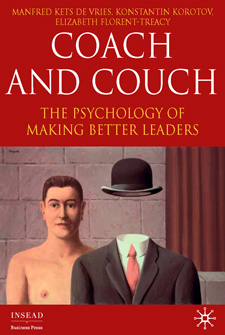Academic articles
Practitioner articles
Working papers
Books
Book chapters
Case studies
Other publications
Subject(s)
Marketing
Keyword(s)
B2B marketing
Sales executives manage their product and services business, lead the sales force, and represent the organization for which they work. In order to succeed in those tasks they need managerial acumen as well as people skills. These include a basic understanding of the markets in which their industry competes, the mechanisms with which these markets function, a comprehensive set of management tools and techniques as well as soft methods to coordinate and motivate their teams.
This is particularly the case when it comes to technology-based companies where a single sales pitch may easily exceed revenues of EUR 100 to 200 million. With generally only a very few, but constantly powerful and aggressive competitors, it is crucial for their executives to understand the current dynamics of the markets, the changing value chains, the necessity of new forms of business partnerships, ways and means to turn services into profitable business, adjusting sales strategy to business strategy, and measuring sales and business performance.
"Bringing Technology to Market" gathers those current developments of B2B marketing and sales, presented by major practitioners and leading scholars in Europe and the US.
"Bringing Technology to Market" will offer basic know how, best practice examples, and new insight and ideas for marketing and sales executives. These are managers, who so far have made their decisions mostly from the gut, frequently relying on stable environments and lasting connections to traditional business partners. Now they are required to understand and work on the developments and changes influencing their present and future markets, be they local, national and/or global.
Pages
235
ISBN
978–3527502707
Subject(s)
Marketing
Secondary Title
Bringing technology to market: Trends, cases, solutions
Pages
61–76
ISBN
978–3–527–50270–7
Subject(s)
Marketing
Keyword(s)
expanding abroad, case of T-Systems
Secondary Title
Bringing technology to market
Pages
147–158
ISBN
978-3-527-50270-7
Subject(s)
Marketing
Keyword(s)
B2B marketing
Secondary Title
Bringing technology to market: Trends, cases, solutions
Pages
159–166
ISBN
978–3527502707
Subject(s)
Marketing
Keyword(s)
B2B marketing
Secondary Title
Bringing technology to market: Trends, cases, solutions
Pages
33–46
ISBN
978–3527502707
Subject(s)
Strategy and general management
Keyword(s)
sales management, sales force, B2B, performance measurement, sales force control system
Secondary Title
Bringing technology to market: Trends, cases, solutions
Pages
135–146
ISBN
978–3527502707
Subject(s)
Marketing
Keyword(s)
B2B marketing
Secondary Title
Bringing technology to market: Trends, cases, solutions
Pages
177–190
ISBN
978–3527502707
Subject(s)
Human resources management/organizational behavior
Secondary Title
Bringing technology to market: Trends, cases, solutions
Pages
167–175
ISBN
978–3–527–50270–7
Subject(s)
Human resources management/organizational behavior
Keyword(s)
Executive coaching, leadership development, executive education, psychology of leadership, clinical paradigm, talent management, HR management, executive coaching
The INSEAD Global Leadership Centre (IGLC) was founded and is directed by Professor Kets de Vries. IGLC has helped thousands of executives to increase their effectiveness in dealing with colleagues and clients, and to refocus their own professional and personal aspirations. This book is a volume of essays contributed by IGLC faculty and coaches on topic relevant to leadership development. Drawing upon substantial research, this book presents the essential leadership models and equips practitioners with tools for developing executive coaches and working with business leaders.
Pages
255
ISBN
978–0230506381
Subject(s)
Product and operations management
Keyword(s)
Manufacturing strategy, supply chain, new product development, innovation
The case study presents the situation faced by Faurecia over the last few years in terms of strategic direction and operations management in the highly competitive environment of car seating.
In a consolidating market, in which survival is based on cost containment and performance excellence, Faurecia, the third largest car seat supplier worldwide, decided to launch an ambitious program to promote innovation and to optimize the new product development process.
The case study analyzes the evolution of the supply chain for car seats, its market demand, the evolving business model imposed by carmakers and the impact it has on sourcing and manufacturing. The central issue of the case is how Faurecia should organize its new product development process in order to increase its performance and involve its customers and its suppliers earlier in the process.
The case provides an opportunity to discuss how a large multinational company can leverage a changing market demand by tuning its business model and adapting its product offering while staying abreast of competition with increasingly innovative solutions. The case lead to discussing issues relative to the organization of the new product development process in a price sensitive market, the design for manufacturing concept and the cooperation/competition role that different companies have to play in a complex supply chain.
| buy now | buy now | buy now |

